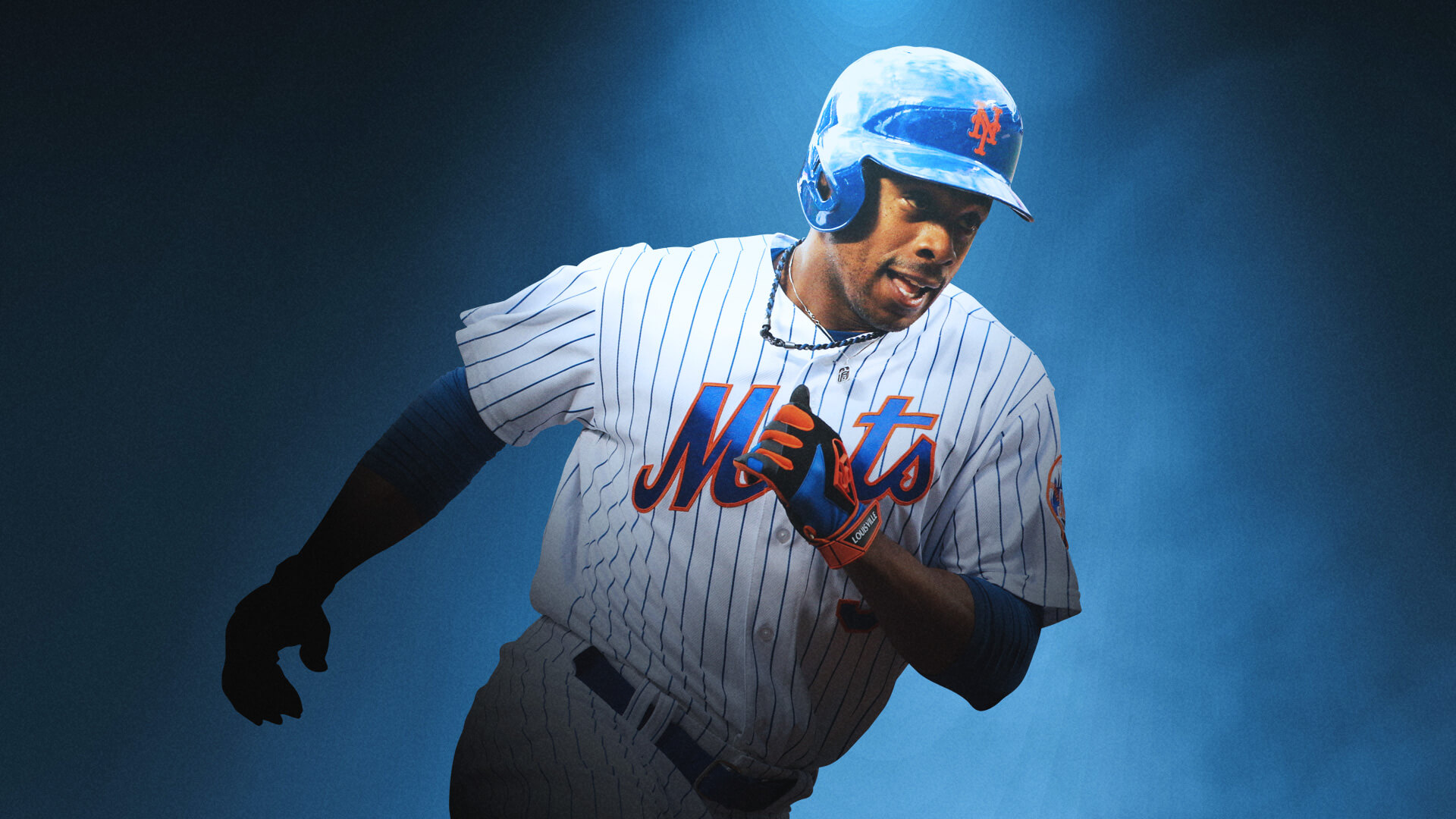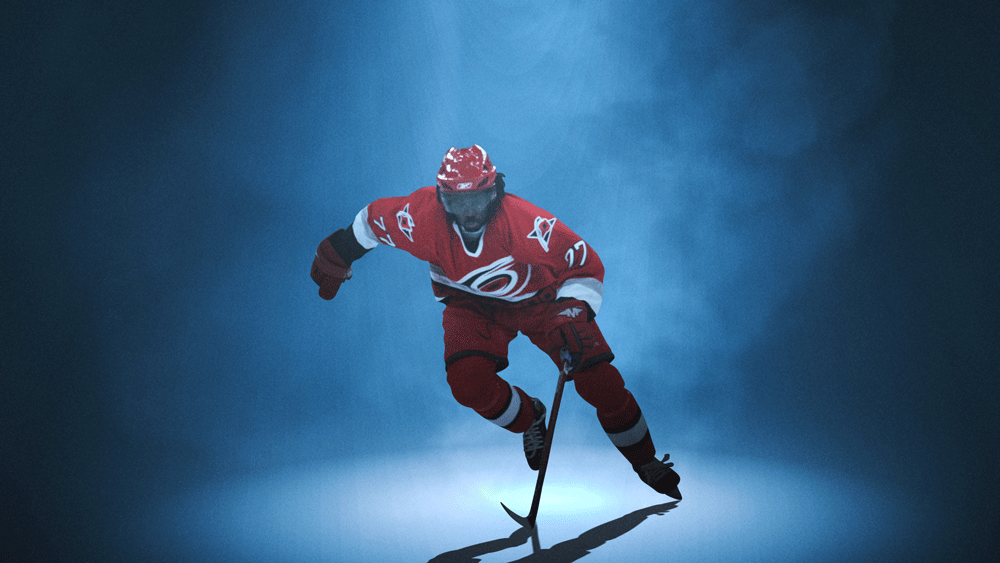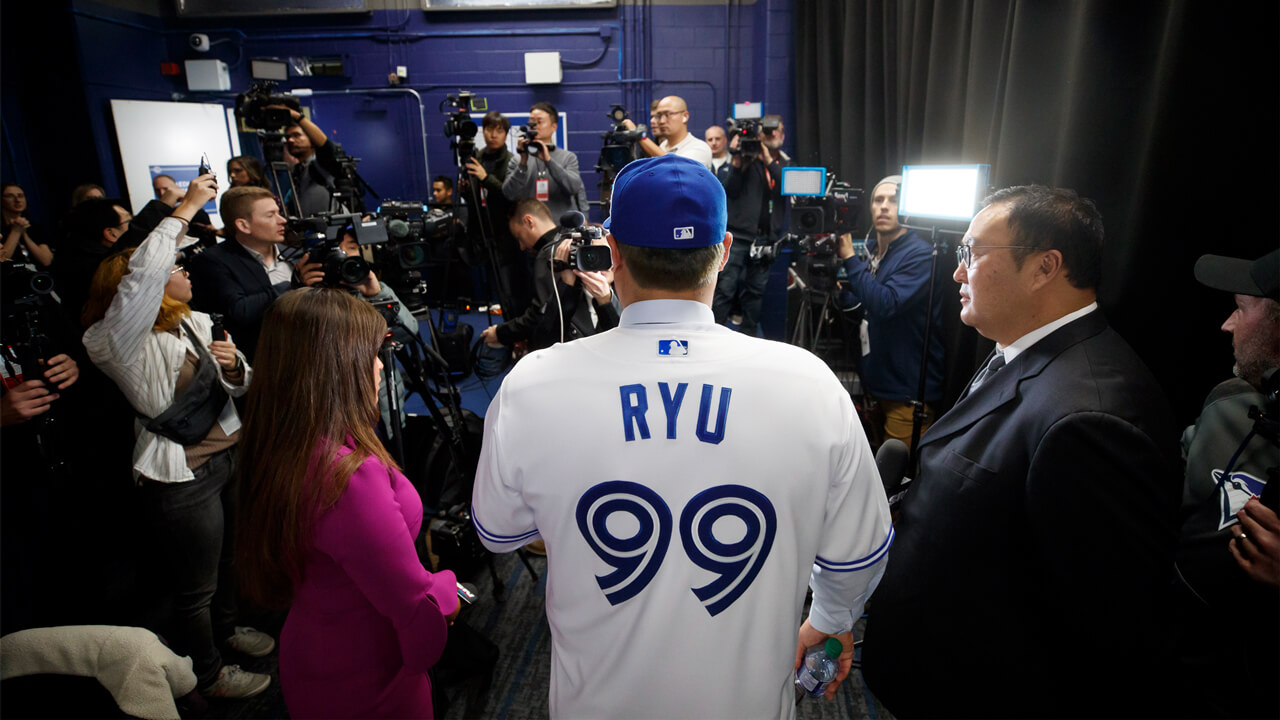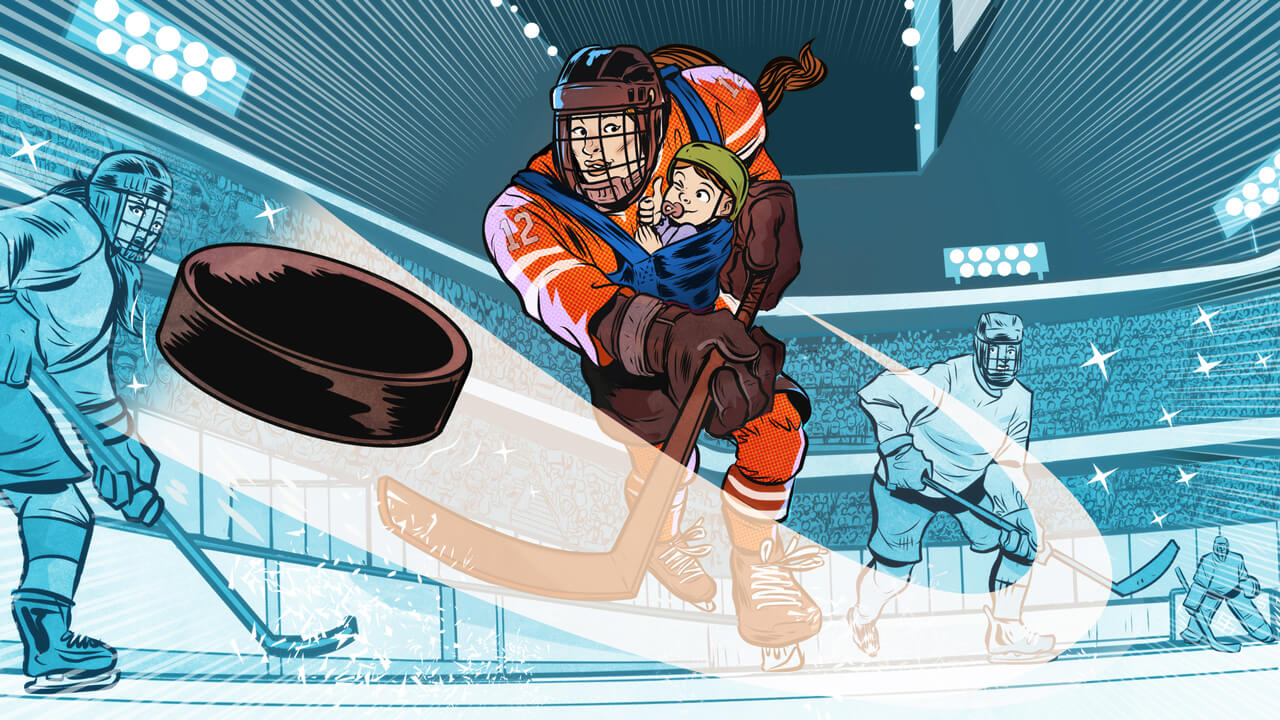Curtis Granderson is getting ready to leave his Atlanta hotel room on May 2, 2017, when he catches a glimpse of the sports ticker as it flashes across the bottom of the television screen. The headline reveals that Orioles centerfielder Adam Jones had racist taunts yelled at him by fans at Fenway Park the night before. Uh oh, Granderson thinks, let me do some research on this. He wants to be prepared when he gets to the ballpark today, because being an African-American professional baseball player, like Jones, he knows the news will have a particular impact on him, too.
As he walks out of the hotel and toward the New York Mets team bus, Granderson whips out his phone. He learns that Jones, a 12-year MLB veteran, was called the N-word several times while manning his position in Boston and that a fan hurled a bag of peanuts at him. Following the game, Jones told reporters it was one of the worst cases of fan abuse he’d heard of in his career.
The bus ride from the hotel to the Braves’ ballpark takes about 30 minutes in traffic, and Granderson understands this is valuable time. He feels a pressure now on him. He’s certain that media will gather around his locker today to speak to him about the incident, and he wants to be prepared when they do. “My focus could have been on communicating with my family or listening to music or reading a book,” Granderson recalls. “Now, I’m doing research on this to make sure I know what exactly happened because it scrolled across the screen very quickly.”
Sure enough, when the Mets clubhouse opens to reporters, Granderson is approached by a crowd and the main topic they want him to address isn’t his team, his opponent or anything to do with the game that night. This scenario is nothing new for African-American athletes. When sports and race collide in the headlines, when Jones is the victim of on-field abuse, or Colin Kaepernick kneels during the U.S. national anthem, or Akim Aliu reveals that a former coach repeatedly used the N-word in his presence, players like Granderson are asked to comment. They may have no relationship with Jones, Kaepernick or Aliu but, still, Black athletes are expected to provide insights and shoulder responsibilities their white counterparts would never be asked to take on. Essentially, they’re asked to play the role of ambassadors for their entire race.

Being made representative of something much bigger than themselves has always been a fact of life for African-American players in Major League Baseball. It was there waiting for the men who moved over from the Negro Leagues. “Every one of those players who transitioned into the major leagues felt their blackness,” says Bob Kendrick, president of the Negro Leagues Baseball Museum. “There was almost no way not to. You understood that you playing well was good for your race.”
There was a flipside to the equation, too, and it meant these players carried a unique weight. They had to succeed on the diamond to justify their spot in the majors, and if they didn’t, the consequences extended well beyond their personal standing. “They knew they had to be great and they knew they had to conduct themselves in certain ways,” says Kendrick. “And if they didn’t, they felt they were letting down their race.”
Today, Black athletes no longer have to justify their mere presence in baseball. But the internal struggle between the desire to carry out your job like anyone else and the feeling of duty to assume a larger social responsibility remains. “It’s a heavy burden,” says Doug Glanville, a retired nine-year MLB veteran. “It’s very personal — how you identify and connect your experience along the lines of race. Some people may say, ‘Hey, I don’t want to talk about this, I just want to play ball.’ You do have a spectrum and that is one way to approach it.”
If an athlete chooses a different road, opting to speak out on behalf of family, friends or community members who share their experience and perspective, they risk attracting unrelenting media attention — something that must be managed in addition to performing at the highest level of their sport. “Microphones are in your locker for the next 200 days, revisiting it and rehashing it,” says Glanville, who now teaches a course at the University of Connecticut on the intersection of sports and society. “That’s a lot to carry when you’re a 23-year-old or a rookie.”
Beyond the pressure and distraction that comes with the increased attention, there’s the impossibility of the ask itself. Glanville argues that being made a de facto spokesman for a race of people is unfair for the simple reason that no one person can represent everybody. Black people aren’t an ethnic monolith, after all. It’s crazy to expect a player to represent the race’s full range of political ideas, cultures, classes and struggles. “If you have any kind of self-awareness of all that complexity,” he says, “it makes for a very stressful time.”
It’s no wonder then that Black athletes can be left with regrets about these situations long past their playing days. “There will always be times later, after your career, where you’ll look back and think differently about what you could have, or should have, or might have done,” says Glanville. “There’s a real blind spot at times when you’re playing because the demand to perform every day and the fear of losing edges, and the fear of backlash — it’s an understandable challenge and concern.”
About eight months before Adam Jones was the victim of racism at Fenway Park, he was at the centre of a firestorm because of his frank comments on race. In September 2016, not long after Kaepernick’s protest began to make headlines, Bob Nightengale, a national baseball columnist for USA Today, spoke to Jones about why, to that point, baseball had not seen anybody kneel during the national anthem. “We already have two strikes against us,” Jones said. “So you might as well not kick yourself out of the game. In football, you can’t kick them out. You need those players. In baseball, they don’t need us.
“Baseball is a white man’s sport.”
It was a sound bite that could be backed up with research. For the 2016 season, people of colour held just 19.6 per cent of the senior team administrator positions across baseball, according to The Institute for Diversity and Ethics in Sport (TIDES). In addition that season, people of colour made up 28.1 per cent of the league’s central office. By the beginning of the 2017 campaign, there were only three managers of colour, while just four people of colour held positions of either president of baseball operations or general manager of MLB clubs.
Nevertheless, Jones’s words invited all kinds of criticism — as he knew they would. Here was someone willingly choosing the bumpy path littered with potholes. “He knew what he was saying — I went back to him the next morning and double checked with him, just to make sure that you’re cool with everything and he was,” Nightengale recalls. “I think it was the fact he said, ‘A white man’s sport,’ that triggered [people] more than anything else. Even though he was correct, some people were taken aback by it.”
Nightengale believes Jones felt able to make those comments because of his standing in the game at the time. He was leader of the Orioles, an all-star in each of the previous four seasons. “You can’t be a bench player or a guy bouncing back-and-forth between the major leagues and minor leagues [and make those comments],” says Nightengale. “Just because it’s too easy for teams to say, ‘I don’t need you.’”
He notes that Jones, who signed with the Orix Buffaloes of Japan’s Nippon Professional Baseball in December, had been reticent to talk about race of late, taking more precautions because he’s not the established star he once was.
Nightengale has been covering baseball since 1986 and frequently writes about race, particularly focusing on the dearth of African-Americans in the sport (Black players made up just 8.4 per cent of MLB rosters as of Opening Day 2018), and says Jones’s openness is a rare thing: “Guys are careful talking about it. If guys talk about it, they want to make sure they’re not the only ones talking about it; that there’s four, five, six other guys in the same story.”
Ken Singleton played in the 1970s and ’80s before transitioning to broadcasting. He notes a drastic change in the relationship between the press and players from 40 years ago. “Through social media, things can happen a lot faster,” says the YES Network analyst. “What you think is a local story is really a national story. I think players are a little bit more on-guard. When I was playing, there was no training of how to deal with the media. They might give you a class in not what to say, but how to say it. Nowadays, there are all kinds of training.
“I think players, rightly so, are more on-guard as to what they do and a little bit more reluctant to be out there, so to speak,” Singleton adds. “Nobody wants to be the big story, whether it’s the gossip page or the sports page. Nobody wants to be there.”

J.T. Brown had never met or spoken with Akim Aliu as of late November 2019. Yet, immediately after Aliu shared his story of racial abuse at the hands of then-Calgary Flames head coach Bill Peters, Brown’s phone was flooded with messages seeking comment. A winger with the AHL’s Iowa Wild, Brown knew his words would carry weight because of his own controversial anthem protest during his time with the Tampa Bay Lightning. He was also keenly aware that there’s a lot more to lose than gain for Black players asked to comment on racially sensitive issues. “Because if we do say something wrong, I feel like it may be more criticized than somebody else saying something wrong,” Brown says.
As he had done in the past, Brown turned to his agent, Eustace King, for advice. He wasn’t the only one. King, who represents several Black hockey players, including Wayne Simmonds, Chris Stewart and Devante Smith-Pelly, fielded calls from clients as well as athletes he doesn’t even work with.
King helped players evaluate the nuances of their local markets and develop key talking points to deliver when they spoke with media: First, they should acknowledge the unfortunate incident that happened and offer empathy. Then, draw parallels to similar scenarios that may have existed in their own experience. Next, King advised players to talk about how the Aliu situation made them feel and what they think should happen as a result.
“Players now have to understand that the expectation on them, unfortunately, is that any time there is a racially provoked incident, the Black player or minority player on the team has to be the spokesperson,” says King, who has been a certified agent since 2004 and has also worked on the NHL’s Diversity Task Force, which has since grown into the Hockey is for Everyone program.
“You do want to come across that you’re educated because the media themselves are educated. And you need to make sure that you say things that are appropriate because there are repercussions. You say the wrong quote or the wrong sound bite, and now it is something that leads the story.”
King’s philosophy is that every player has a different upbringing and lens on an issue, and it’s his job to support and honour individual viewpoints as opposed to gatekeep them. Which is what he did in 2017, when Brown raised his fist during “The Star-Spangled Banner” to bring awareness to police brutality and racial inequality. The protest attracted controversy and shone a bright light on Brown. He received death threats afterwards.
“I was perfectly fine with doing that,” Brown says. “Obviously, I had talked to many people prior to going through with it and getting as much information as possible. I already knew what type of backlash was going to happen and that it would happen.”
Brown says he was compelled to join the protest that Kaepernick began because he wanted to evoke positive change so that his children could grow up with a more “inclusive lifestyle” than he had when he was young. He also wanted to ensure the struggles of minorities in the U.S. weren’t going unnoticed by people in his sport.
In the aftermath, Brown sat down for a one-on-one conversation with Lightning owner Jeff Vinik and also met with the chief of police in Tampa Bay — both positives he says resulted from speaking out. Brown also received support from teammates and people on Twitter and Instagram who shared their own stories with him. “[In hockey] you don’t want to be a distraction to your team,” says Brown. “If you just listen to almost every interview, guys rarely will take credit. It always goes back to the team mentality. By speaking out and putting your neck out there, it brings a different spotlight that, in hockey, generally, doesn’t happen very often … I think it was important for me to make my stand.”
While players such as Brown sit on one end of the ambassador spectrum, there are others on the opposite side who prefer to let their actions do the talking. Star defenceman P.K. Subban has made notable philanthropic commitments during his career, but has also been criticized in some corners for not explicitly speaking out about race.
Anson Carter, a retired 10-year NHL veteran, sees both sides. “Because he was one of the best players in the league for a while there in his position, I could see how people would want him to take leadership with having those conversations,” Carter says of Subban. “But at the same time, I can’t fault P.K. for deciding not to speak about topics. He’s his own man. So, he should be allowed to decide what he wants to talk about and we should be okay with that.
“But I also feel like you have a responsibility to talk about things because if you’re a person of influence in the game, why would you not?” he continues. “If you’re a person of influence, I think people want to hear from you. That might have a greater impact than somebody who is not. And you might have more confidence in speaking without fear of retribution than someone who might not be at that level, too.”
Carter remembers an anecdote from his time at Michigan State University when a student reporter asked him what it felt like to be a Black hockey player. He laughed and retorted, “Well, how does it feel to be a white reporter?” The student then admitted it was a dumb question and Carter responded by comparing their situations. “I don’t walk around thinking, ‘Hey I’m a Black hockey player,’” he says. “You are who you are. So, after getting that response, I shut that down real quick. It’s not something that you wear around as a badge of honour — that’s who you are as a person. That’s never changed.”
Adds Kendrick, the Negro Leagues museum president: “You don’t have to ever really think about being white. But [as a person of colour] in almost every aspect of life, you have to think about how your colour comes into play. Sports is no exception. Baseball and hockey are clearly no exception. There is a level of inherent awareness.”

When Granderson finished answering questions about Jones in the visiting clubhouse in Atlanta, he posed one of his own to the assembled media: “I mentioned to them that although it did happen to an African-American person, it still happened to a baseball person. ‘There are 24 other baseball people in this locker room. Why don’t you ask any of them?’” he recalls. “The response was, ‘Well, you know, the obvious is because it happened to somebody who is Black, why not talk to a Black person?’ I understand that, but it also happened to a person. And there are people in this locker room you could have spoken to about it.”
Granderson, who remembers being the only African-American on the Mets roster that day, says that when he went online and read the corresponding stories in the days that followed, none of his teammates were quoted. That’s a problem, he insists, and a clear impediment to progress. Granderson likens it to talking with only males about a male situation — if that’s the case, then the resulting story is one-dimensional and the important female perspective would be missed.
“If you only talk to a Black person about a Black situation, then it’s going to be very difficult to look at anything else,” says Granderson, who officially retired from MLB in late January. “I hope that if there is a topic that affects anybody of any race or ethnicity, you go talk to people you want to talk to, no matter who that person is, no matter what their colour is. Don’t just talk to the white player because it’s a white issue. Don’t just talk to the Black player because it’s a Black issue.
“There are players that could be affected by the situation, but you won’t know unless you ask them.”



